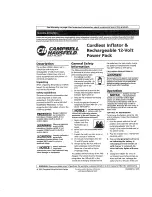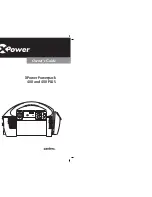
8843674
Air Nibbler
V1.0
4
For technical questions call 1-800-665-8685
7.
This tool can cause hearing damage. Wear hearing protection gear with an
appropriate Noise Reduction Rating to withstand the decibel levels.
PERSONAL PRECAUTIONS
Control the tool, personal movement and the work environment to avoid
personal injury or damage to tool.
1.
Do not operate any tool when tired or under the influence of drugs,
alcohol or medications.
2. Avoid wearing clothes or jewelry that can become entangled with the
moving parts of a tool. Keep long hair covered or bound.
3.
Do not overreach when operating a tool. Proper footing and balance
enables better control in unexpected situations.
4.
Support the workpiece or clamp it to a stable platform. Holding the
workpiece by hand or against your body may lead to personal injury.
SPECIFIC SAFETY PRECAUTIONS
WARNING! DO NOT let comfort or familiarity with product (gained from
repeated use) replace strict adherence to the tool safety rules. If you use this
tool unsafely or incorrectly, you can suffer serious personal injury.
1.
Use the correct tool for the job. This tool was designed for a specific function.
Do not modify or alter this tool or use it for an unintended purpose.
2. Keep hands and fingers away from work area. Any part of body coming in
contact with moving parts could cause injury.
3.
When operating the air nibbler, use proper eye and hearing protection as well
as protective heavy work gloves.
4.
To maintain complete control, firmly hold your air nibbler with both hands. Do
not place hands over air vents.
5.
Never point the tool towards yourself. If it should slip, part of your body could
come in contact with moving parts.
6.
Never force the tool. Excessive pressure could bend or break the punch,
resulting in damage to the tool, your work piece or serious personal injury. If
your air nibbler runs smoothly under no load, but does not run smoothly
under load, then excessive pressure is being used.
7.
This tool will not stop moving immediately. Do not lay the tool down or leave
it unattended until it has come to a complete stop. A part that is moving could
make the tool jump or grab a surface and pull the tool out of your control.
8.
Contact with a ‘live’ wire will make exposed metal parts of the tool ‘live’ and
shock the operator.





































